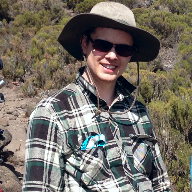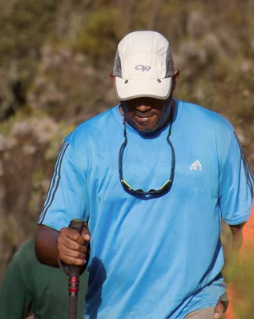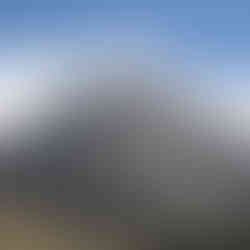Conquering Kilimanjaro: Is 'Hakuna Matata' the Key to a Successful Summit?
- Oct 17, 2015
- 7 min read
Updated: Sep 12, 2024
As unbelievable as it may seem, our choice to summit Kilimanjaro was inspired by a captivating image of "Kili" soaring above the clouds, coupled with a spontaneous surge of adrenaline as we envisioned ourselves at the mountain's peak.

We are reasonably good hikers and have climbed various mountains individually, or together to name a few Mount Kinabalu in Borneo, Grand Piton in St Lucia, Chappada Diamantina in Brazil…
But did we really know what we were getting ourselves in for when we decided to climb Kili???? Hell No!!!!!
I started my research - Google, travel companies, any friends who had been and, it started to dawn upon us that this may not be as glamorous as the picture of two of us floating along with the clouds on the top of the mountain. Kilimanjaro’s highest point, Uhuru Peak, at 19,341 feet (5,895 metres), is thousands of feet higher than Everest base camp 17, 598 feet (5,364 metres), which climbers take about two weeks to reach..well I am sure many of you did not know this, neither did I…
It became apparent very quickly that Kili was going to be a serious climb…and what’s more mad was that we were paying to climb this bad boy…
Our travel company Africa Travel Resource guided us through various different routes that could be taken to ascend the summit. After quite a bit of R&D and based on various factors such as the number of days, avoiding the crowds and enjoying the varied landscape, we decided on The Rongai Route.
So finally we paid the (non refundable!) deposit, and made it official that we were going to climb Kili.
The reality was that I (and Amol) were beginning to dread every moment of it and, realised that if we were even to have a shot we would have to train for the climb. Training for a holiday - that sounds fun...
But, when talking to friends and gym instructors the training advice was as follows:
Stop Drinking – Really???
Eat Healthy - definition of healthy? whatever it is we were going to stretch it...…
Keep walking and walking and walking - What?
Loose excess fat - Haha - try telling Amol that ;-)
The general perception is that the fitter you are the greater your chances of summit success but this is far from being a hard and fast rule. Reaching the top of Kili also depends more than anything else on how you cope with the altitude.
And how you cope with the altitude is not a matter of luck! There are many things you can do to avoid the symptoms of acute mountain sickness.
The key to preventing altitude sickness is to take your time. Altitude sickness is not only a result of the absolute height you are at, but also depends on how fast you got there!
So Amol and I made our own rules:
Restrict to one or two drinks on social occasions - Avoid getting smashed.
Cut carbs and sugar, but stick to a reasonably normal diet.
We thought slow but high gradient walking in the gym could be beneficial, so we did 45 minutes of gradient walking on alternate days during the week
We also climbed Scafell Pike 3,209 feet (978 metres) the highest mountain in England.
When we reached "go time", we were in fairly good shape (but still not confident enough).
Finally, it was time to put our efforts to test. We flew into Nairobi for a night and then to Kilimanjaro where we stayed in the Marangu Mountain resort - this was the day before we were going to start our hike. Excitement and nervousness started kicking in. We met with rest of our group and our ground advisor from the Africa Walking Company - Mr Godson :-)
After a brief introduction we collected the equipment we had hired. Godson - told us the best mantra for making it to the summit is to stick to three golden rules:
1. Drink loads of water - 2-3 litres a day
2. Pole Pole (means "slowly slowly" in Swahili)
3. PMA (Positive Mental Attitude)
Follow these rules and before you know it you would have conquered the mountain. Game On!!!
06 September 2015 - The Adventure Begins...
The Rongai Route ascends Kilimanjaro from the northeast side of the mountain, along the border between Tanzania and Kenya. This route retains a sense of unspoilt wilderness and offers a different perspective on Kilimanjaro by approaching it from the north.
The untold truths about Kilimanjaro
Day 1: Rongai Start Point (1996m) - Simba camp (2671m) Hiking time: 4 - 5hours Distance: Approximately 6.7 km Habitat: Forest (Montane)

You literally need a village to help you get to the Summit.

About 35,000 tourists attempt to climb Kilimanjaro every year, and about half of them make it to its peak. On average, three to seven die annually on the trek.
I soon realised as we reached Simba Camp that occasional climbers / tourists like me could not even attempt this climb without the guides, especially the porters - the local young men who quite literally break their backs for the sake of the summit. There were twelve of us in my group attempting to summit and 47 porters. Yes, 47!
On any given day, they strapped tents and toilets to their backs while balancing food sacks on their heads. They would start after us and still beat us to set up the next camp carrying most of our luggage. And every time they passed us, we were amazed by their fitness.
We never would have made it up that mountain had it not been for these brave Tanzanians.
Day 2 : Simba camp (2626m) - Kikelewa Camp (3600m)
Hiking time: 6 – 7 hours Distance: Approximately 11.8 km Habitat: Moorlands

A good fun group makes a difference...
Kili is physically demanding but it requires high level of mental fitness too. Great sense of humour goes a long way as each day demands more and more out of you. Once you have reached your camp for the day a good laugh and chat definitely keeps the momentum going for the next day...
Let me introduce you to our group
Ian - Our Expedition Photographer Seb - The “Social Scientist”
John - Came to watch Ben fail Darren - Came to watch John fail
Jonathan - Also came to watch Ben fail Ben - One who was suppose to fail ;-)
Dilip – The Grandad of the group
but one of the fittest Hans - The Clever one
Fi - The fun one T (Terrance) - Bourbon and Cigars
Amol – My crazy hubs Sheetal - Me
Day 3: Kikelewa Cave (3679m) - Mawenzi Tarn camp (4303m) Hiking time: 3 hours Distance: Approximately 3.7 km Habitat: Moorlands
The mountain is the Boss and your guide is your Guru.
If you feel unwell, get minor / major headaches, nausea don’t fight it - accept it. It’s natural, we are not super humans. Listen to your guides - take deep breaths, drink loads of water (in small sips), and take it slowly- do not fight your body. Let the mountain take its course.
Day 4: Mawenzi Tarn camp (4303m) - Kibo hut (4720m) Hiking time: 5 hours Distance: Approximately 9 km Habitat: Alpine desert

Stink is your new friend - embrace it!
Climbing Kili is not only physically and mentally challenging but a smelly one too….
Six days with no shower. Yes literally no shower! Get ready for your porters to bring a small bowl of water at 6 am knocking on your tent, as you hear the words “Washy Washy!”

Ha-ha - the bowl of water was probably enough for me to brush my teeth but I was expected to use the same to wash up.
As a city girl no shower for six days, hair full of dust, repeating sweaty clothes and socks I thought was impossible. Your life for these six days revolves round the wet wipes (take loads of them).
To tell you all the truth I felt very uneasy on the first day, second day I had no choice, third day I had got use to it, and by day four I was embracing the stink. By the end of the hike I learnt, that sometimes its best to let go and the sense of freedom is really liberating…

Day 5: Kibo hut (4720m) - Uhuru Peak (5895m) Hiking time: 7 to 8 hours to reach Uhuru Distance: Approximately 5.4km ascent
Pole Pole - SUMMIT!
Today we had an early dinner, followed by a debrief about our summit attempt starting at midnight. It was bedtime around 6:30pm. By the time our eyes drifted, I heard knock on our tents; it was 11:00 pm.
It was time!
We had slept in our clothes (so that they would be warm), quickly got dressed, checked our bags, topped up our water supply, and headed off to the mess tent for a cup of tea.
Hands shaking and teeth chattering because of the cold with excitement and anxiety levels rising at the same time. As the clock struck midnight, and some final words of wisdom from our chief guide, our group set out into the darkness to conquer the Africa’s highest mountain.
Amol and I looked at each other reminding ourselves why we came here, said to each other – first let’s get to Gilman’s point but secretly we both knew we knew we wanted our picture floating above the clouds as cliché as it may sound - we wanted to conquer Kili….
Night was long and seemed never ending. Thin air and diving temperatures, made each step more and more arduous. All you could see in front and behind you were the headlights of fellow dreamers / madcaps like us…
This was it - all that training, hiking for hours and hours for the past four days it was either going to pay off or we had to call it quits. Somewhere near Jamaica Rocks we were really thinking – is this ever going to end??? What were we thinking when we signed up for this??
But bless our guide Brown (the saviour) who kept on saying, “You can do it guys” Pole Pole! Whether it was the cup of tea, or him singing a motivating song in Swahili, we just kept on going and before we knew we had reached Gilman’s Point.
However once we got there, Amol’s heart started racing at 200 beats a minute, the goal seemed slipping away from our hands.

But through sheer mental will power, Brown with his magic and patience just did not let us loose our focus and finally we reached UHURU PEAK - Hurray! As we approached the peak the adrenaline started pumping in and we forgot about racing heartbeat, aching joints, sore hands, bone-chilling cold all just seemed to disappear.
I looked at Amol and here we were floating above the clouds on the highest freestanding mountain in the world…







































































Comments